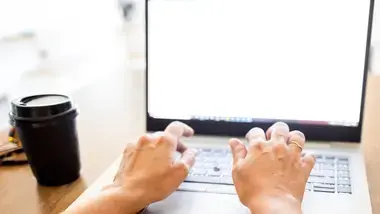America is a death-denying culture. We don’t like to think about, talk about, or even acknowledge death as an inevitable reality. Even if we’re going to die, the topic is uncomfortable, and often swept under the rug.
As advisors, we see this in daily interactions with our clients. It isn’t uncommon for any of us to go into denial — about our mortality — and be thrown by intense emotions death brings up when it happens. Denial can be a coping mechanism, but it also has the potential to be harmful and rob friends and family of special moments at the end of life.
Managing these emotions and situations is far more important and consequential than handling the financial aspects of dying.
And in America, those costs are significant. The cost of the last three months of care in a hospital can run upwards of $56,300 (not all of which is covered by health insurance), according to Federal Reserve data, and the cost of hospice care can average $18,000 per month or more, according to the University of Pennsylvania data from 2016. In addition, the direct costs related to the death of a loved one can average $20,000 (including funeral home, accounting, legal, and real estate fees) — even before factoring in lost income from taking time off to settle these affairs). That is according to a recent survey by Empathy, a technology company that provides support to bereaved families. Consider that the average person takes 15 months to complete all of the administrative tasks to wrap up a loved one’s affairs (18 months for executors), and you can appreciate death’s financial realities.
Why is the end of life so expensive?
Progressive disability often comes with fatal illnesses. As people age, they become less able to tend to home, cook, handle finances, walk, or care for themselves. The need for services such as occupational or physical therapy or home health nursing jumps substantially as a result of disability — particularly if a person wants to remain at home.
Most people who are dying need help during their last weeks and often for much longer than that. Unfortunately, most people may not know that Medicare doesn’t cover many of the services dying people need, such as long-term nursing- home care, or having a home health aide at home. A notable exception is hospice, but qualifying for Medicare hospice can be difficult if the person has significant needs.
As a result, many families deplete their savings while caring for a dying family member. Family members who provide most of the cases at the end of life are often stressed from carrying too much of the burden.
Five essential documents you need for end-of-life planning
To ensure that you don’t become a burden to your family as you approach the end of your life, planning is essential. Even before considering how you will cover your end-of-life expenses, you need to consider having the following five documents in place.
1. Will: As your primary estate planning document, your will lays out who you want to give your assets to when you die and helps ensure your estate is distributed correctly when the time comes. Your will also specifies who becomes your children’s legal guardian, and who will take in your pets, if you become incapacitated.
2. Power of Attorney (POA): A POA designates someone to step in and manage your finances if you are unable to. A General POA designates someone to act on your behalf on all matters (medical, legal financial, etc.), while a Limited POA appoints someone to act on your behalf only in specific matters or events (e.g., incapacity to manage your affairs during a medical emergency). It’s very important to have a POA if you are single since you don’t have a spouse to jump in, and without one, a court will decide who should serve as your guardian.
3. Healthcare advance directives: A healthcare directive works much like a POA, but it handles medical rather than financial decisions. There are two main types of directives. A living will lay out a person’s instructions or preferences about future medical treatments, particularly end-of-life care if you become incapable of making health care decisions. A health care power of attorney appoints a person to make decisions for the person in the event of incapacity to make health care decisions (either temporary or permanent).
4. Beneficiary designations apply to life insurance or retirement accounts such as 401(k), 403(b), IRAs, etc. They dictate who will receive your benefits after you pass away, and, importantly, they supersede what’s in your will. It’s wise to review beneficiary designations regularly, but at least once a year.
5. Trusts: Not exactly a document per se, a trust is a legal entity created to hold assets on behalf of a beneficiary or beneficiaries. The person setting up the trust (the “donor” or “trustor”) can dictate exactly how and when beneficiaries receive the assets in the trust. There are many types of trusts, but the one we’ll focus on here can be appropriate for end-of-life planning — an irrevocable trust.
An irrevocable trust, as its name suggests, cannot be amended or terminated after it’s been established. The main benefit of an irrevocable trust in end-of-life situations is that it removes assets from the donor’s taxable estate, and trust assets can be used to benefit a surviving spouse, who receives certain tax advantages.
Trusts can be expensive and complex to set up and administer, so be sure to talk to your financial advisor or an estate planning attorney to ensure a trust makes sense before adding one to your estate plan.
Investment and end-of-life planning strategies
Wealth Enhancement Group has developed a planning tool called Your Money Matrix™ to help individuals and families potentially sustain the income they need throughout their lifetimes, especially as the end of life nears. It places money in accounts that correspond to how assets and earnings are taxed — taxable, tax-deferred, and tax-advantaged. It then sets clear timeframes when an account owner needs the money, using the following rules:
- Short-term: This is money you need now or during the next three to five years. These should be low-risk investments.
- Medium-term: Money you need between six and ten years from now. Balanced investments are generally advisable.
- Long-term: Money you may need more than ten years in the future. Since you don't need this money for at least ten years, these investments should be focused on growth.
You draw cash from each bucket over a multi-year strategy, depending on cash flow needs, prevailing and future tax rates, and your timing of need. Your Money Matrix gives you peace of mind by providing for yourself and your family — regardless of where taxes markets or inflation are headed, or when the unexpected happens, such as a fatal, debilitating illness.
The best way to prepare: stay as healthy as you can
According to doctors at the Mayo Clinic, about 30% of your quality of life as you age is due to genetics, and 70% due to lifestyle choices. So we have a lot of control over the quality of life we have as we get older. That means eating a proper diet, having regular moderate exercise, sleeping at least seven hours a night, managing stress, cutting out smoking, reducing screen time (as well as limiting caffeine and alcohol), and engaging with family and friends.
View the original article published by Pioneer Press.
End-of-life planning does not have to be something we sweep under the rug. In fact, it should bring more meaning and satisfaction we have to the limited time we know we have remaining.
The opinions voiced in this material are for general information only and are not intended to provide specific advice or recommendations for any individual.
By Bruce Helmer and Peg Webb, Financial Advisors at Wealth Enhancement and co-hosts of “Your Money” on WCCO AM 830 on Sunday mornings. Email Bruce and Peg at yourmoney@wealthenhancement.com. Advisory services are offered through Wealth Enhancement Advisory Services, LLC, a registered investment advisor and affiliate of Wealth Enhancement Group.





